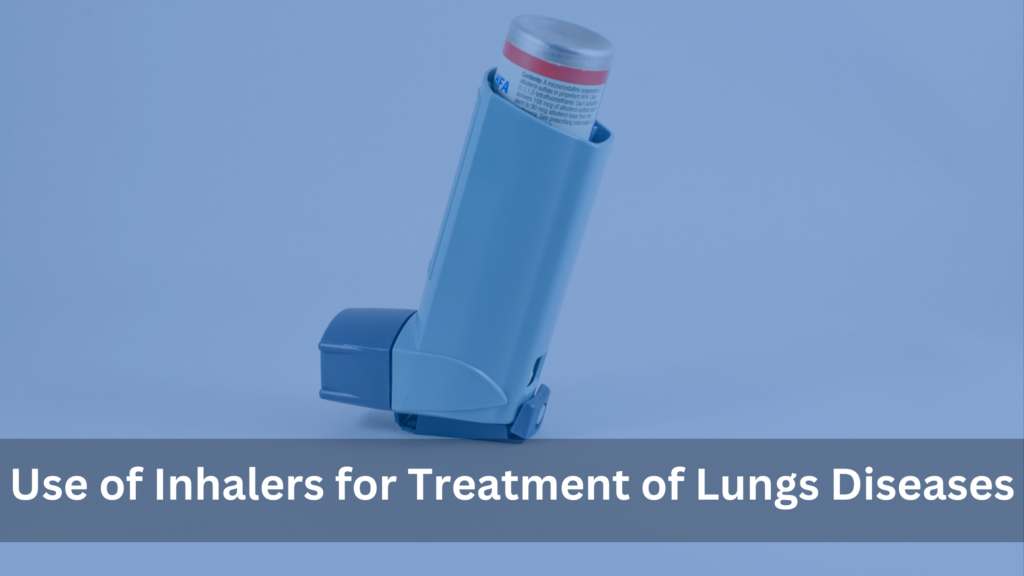Inhalation of different aromatics, vapours and smokes had been popular since millennia as a life-style habit among people of all classes in different countries in one or the other form. Inhalation route was commonly employed for both recreational and medicinal purposes. In ancient Hindu epic Ramayana, inhalation of the miraculous herb (Sanjeevni booti) was used to bring Lakshmana, the brother of Lord Rama back to life after he fell unconscious in the war. In Greek mythology, the priestess Pythia of the Temple of Apollo at Delphi would inhale vapours from clefts in the slopes of Mount Parnassus and deliver prophecies in a delirious state due to effects of those vapours. In the Middle Ages, inhalation of different gases was commonly used for their euphoric and pain-relieving properties as well as for treatment of cough and breathlessness. In modern times, inhalation is medically used in the management of asthma and other lung diseases. Inhalers are used ideally as the first line of therapy.

Inhalation treatment has continuously progressed and several different kinds of devices have been developed. Unlike the earthen and metal pots of the past, presently there are different types of small devices which are usually hand-held or sometimes employ a compressor for nebulization. Technological advances have made inhalation as an effective and first-line approach for administration of drugs in lung diseases. Maintenance treatment of respiratory diseases such as asthma, chronic obstructive pulmonary disease (COPD) and other causes of airways obstruction is more effectively done with inhalational drugs. Undoubtedly, inhalation therapy for airway diseases has withstood the test of time and inhalers have come to occupy the centre-stage of management for asthma and COPD.
Administration of inhalational treatment for lung diseases is a type of direct and local application of drugs in the lung. It is akin to the local application of lotions and ointments for skin, eye and ear diseases. It is direct delivery of the drug to the site of the disease. There are several advantages of such a direct delivery:
- The effect is immediately noticeable, therefore useful for relief of acute symptoms. For example, inhaled drugs can be conveniently used at home during an acute attack of asthma.
- Dose required for each inhalation is very small, usually about one tenth of the dose of a tablet. Moreover, almost negligible amount of the drug is likely to be absorbed in the blood. Therefore, the side effects are negligible.
As of today, many of the reliever and controller drugs used for asthma are available as inhalers – single, dual or triple combinations of drugs of different groups. The choice of a particular inhaler rests with the treating physician depending upon the indication and patient’s condition.
There are several difficulties and myths about the use of inhalers. The common complaints of patients include the following:
- ‘Addicting’ effect; once you start the use of inhalers, you have to stick with them throughout your life.
- Stigma of use especially in case of children and female patients.
- Difficult to use
- Costly treatment
Most of these issues require to be dispensed with. There is no addicting or habituating drug used in an inhaler. A patient who requires continued treatment will require continued use of inhalers. But this should prove to be rather advantageous because of the safety of inhalational treatment. The stigma issue these days is entirely temporary or non-existent. The treatment modality is common and wide-spread in the society. Inhaler drug works out to be more economical in the long run even though the initial cost is likely to be more. Better control of asthma reduces the number of doctors’ visits, hospitalizations and periods of absence from work. Overall, the costs associated with poorly controlled asthma are saved and expenses reduced.
Use of inhalers is especially challenging in case of the elderly, small children, people with disabilities and those with altered consciousness. Inhalational drugs in such situations can be administered through nebulization done with the help of a compressor driven machine that breaks the drug solution into fine vaporized particles which are inhalable and able to reach the distal parts of the lungs.
How to use an inhaler?
Metered Dose Inhaler contains multiple doses of a drug in a liquid state inside a pressurized canister. With each actuation of the inhaler, a fixed amount of the drug is released in the form of a ‘puff’ containing drug-droplets of uniform size. The released drug is then inhaled deep into the lungs. The use of a ‘spacer’ between the inhaler and the mouth is a helpful device to assist better inhalation.
Dry Powder Inhaler (single or multi-dose) contains the drug in a finely micronized powder form. The greatest advantage of DPIs is the ease of use – the drug is released only on inspiration. The steps of Actuation, Release and Inhalation are therefore, much better coordinated with little wastage of drug.
The best chest center employs an inhalation counsellor for patient education & training.
